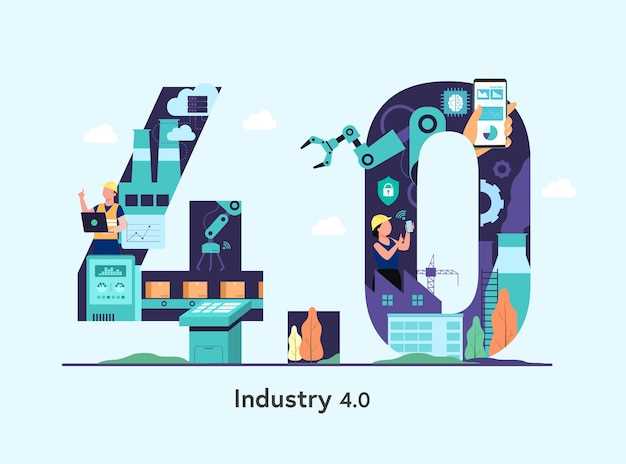Comience by mapping your most critical suppliers and their ESG credentials in a centralized network. Move away from spreadsheets and implement an AI-enabled monitoring layer that aggregates supplier data in real time. Set goals with strong alignment to your operating realities; this approach reduced response times and strengthened resilience when disruption hit because the signals were tied to actual performance. To begin, ensure the data quality checklist is applied across all sources.
Use AI to monitor ESG indicators across the supplier network and translate trends into early alerts that identify material risks before disruption shows up. Ensure data are available from suppliers and partners, and move away from manual spreadsheets to automated feeds that keep signals reliable and actionable.
Just begin with a governance layer that binds ESG targets to AI-driven decisioning. Build capability teams to explain model outputs, maintain alignment con goals, and ensure leadership owns the risk and reward picture. Start small with pilot initiatives in select segments to gather feedback and demonstrate measurable improvements in risk-adjusted performance.
ESG-Driven AI in Supply Chains
Launch pilots in two regions now and tie ESG targets to logistics and storage data; use a 12-week cycle to quantify reductions in energy use, waste sent to landfill, and on-time delivery rates, then scale based on results.
Build an end-to-end data fabric that links supplier ESG scores, carrier emissions, and storage conditions; assign an assistant to normalize feeds and a team of planners to align procurement with ESG targets.
Apply AI to forecast ESG risk across the network and reroute orders to higher-performing suppliers; run scenario models that balance cost, carbon, and resilience.
Adopt insights from mckinsey and a maestro approach to organize cross-functional teams; this can yield greater collaboration, faster decisions, and a stronger game among competitors.
Measure impact with concrete metrics: in pilots, emissions intensity drops between 12% and 18%, storage waste falls 9-14%, and stockouts decline in the 6-12% range; track these in a live dashboard that aggregates data into a single view.
Building a core team with end-to-end ownership, embed a data catalog, and standardize API integration for suppliers; implementing this approach requires investment in cloud storage, secure data sharing, and reusable models.
During early rollout, invite partners to co-create value and document lessons; share results across the company and with suppliers to accelerate reach and impact.
Plan for expansion: tune models, broaden supplier coverage, and publish quarterly ESG-AI updates to keep leadership engaged and to drive improving ESG outcomes.
Link ESG Metrics to Forecasting Inputs for AI Models
Map ESG indicators directly to forecasting features and embed conditional adjustments in AI forecasts when a threshold is crossed, then monitor impact monthly.
Build a taxonomy that links environmental, social, and governance metrics to forecast inputs such as demand signals, supplier lead times, and safety stock. For environment, track emissions intensity and environmentally friendly energy use; for social, monitor labor incidents, turnover, and compliance acts; for governance, record audit findings and policy adherence. The mapping represents how ESG risk translates into operational forecasts and applies to items across the industry and its tiered suppliers.
Data quality and diligence: pull data from ERP, MES, and supplier portals; standardize units; establish a data lineage and a quality score. It takes disciplined governance to maintain reliability; maintain data diligence across sources. Set cadence by risk: weekly for high-risk items (top 20% spend) and monthly for low-risk items. Close the data gaps with transparent imputation to avoid costly decisions. This practice helps the model learn from real-world signals and reduces the struggle with noisy inputs.
Experimentation: run controlled experiments to quantify the uplift in forecasting accuracy when ESG-linked features are included. Track MAE and MAPE reductions, and measure percent change in forecast bias. Use A/B testing or time-series backtests; document technical debt and learn from failures; iterate on feature engineering. The model learns from each experiment and improves reliability as adopters scale.
Operationalization: automate the ESG-forecast integration into the planning engine; set threshold-based alerts; automatically re-plan inventory, orders, and safety stock when ESG signals cross thresholds. This reduces costly cycles of manual adjustment and accelerates reaction by next-day to next-week planning. This approach helps reduce forecast error and lowers total cost of ownership across the supply chain.
Adoption and governance: start with a pilot in a focused segment of the industry, targeting 5–10 critical items with high theft risk and high ESG exposure. The pilot should show how ESG signals cut forecast error by percent and how the model learns to adjust orders in near real time. Document the acts of governance and data-use policies to maintain diligence and trust. If you see improvement, scale to more items and more suppliers; automates the expansion while maintaining oversight. The adoption base includes adopters across suppliers and manufacturers who want to reduce environmental footprint and operational costs, with environmental benefits as a byproduct.
Next steps: establish a formal ESG forecasting rubric, define data contracts with suppliers, and set quarterly reviews that track fuel consumption, waste, and theft-related incidents against forecast performance. Align incentive programs to metrics that matter for resilience and cost containment, ensuring every adopter contributes to a more responsible and efficient industry baseline.
Embed ESG Constraints in Demand Planning Algorithms

Embed ESG constraints directly into demand planning algorithms by adding an ESG-aware objective and a constraints layer that ensures regulations are respected and emissions targets are met. This approach keeps planners aligned with risk and compliance while preserving service levels. The outlook improves when intelligence surfaces seeing signals of ESG misalignment early, enabling orchestrated adjustments across teams. It’s solid and ready to scale across the supply chain.
-
Define ESG constraints and thresholds. Identify emissions and environmental limits per SKU, supplier ESG ratings, water and waste metrics, labor compliance, and anti-fraud controls. Set explicit thresholds, for example: emissions intensity per unit ≤ 0.6 kg CO2e, supplier ESG score ≥ 0.75, and no violations above 0.5% of spend. Represent these rules in a text-based policy so the engine can apply them consistently. According to policy, align constraints with regulatory requirements and corporate standards to avoid regulatory friction and ensure readiness for audits.
-
Ingest and align data from diverse sources. Pull generic supplier data, audits, incident logs, and regulatory updates into a unified view. Use orchestrated data pipelines to keep data fresh and trustworthy, and map each data point to product families and sourcing nodes. This enables matches between demand signals and ESG status, reducing blind spots and fraud risk.
-
Model design: multi-objective with ESG penalties. Incorporate ESG objectives alongside cost, service levels, and lead times. Use a penalty or weight that scales with non-compliance risk, ensuring you don’t sacrifice essential service levels. Builds a balanced objective, unlike single-criterion models, and makes the tradeoffs transparent for planners.
-
Validation, governance, and controls. Backtest against a 12–24 month window to measure how often plans complied with ESG rules and how often forecasts matched ESG targets. Establish a governance cadence with a cross-functional teams including procurement, sustainability, risk, and finance. Track a fraud-detection score and set a threshold to trigger reviews when anomalies exceed 2 percent of spend.
-
Operationalize and monitor continuously. Deploy with quarterly refresh cycles and alerting for ESG deviations. Provide planners with dashboards that show ESG-adjusted outlook, constraint breaches, and recovery steps. This fosters smooth, smoothly-executed adjustments that align with both demand reality and ESG commitments, and keeps the process ready for times of supply disruption.
Key metrics to monitor include:
- ESG compliance rate: target 95–100 percent of spend under compliant supplier engagements.
- Fraud and anomaly alerts: aim to reduce flagged events by 40 percent through stronger rule sets and text-based policy checks.
- Forecast accuracy with ESG tilt: improve ESG-adjusted forecast accuracy by 8–12 percent versus baseline models.
- Lead-time impact: ensure expedited or alternative sourcing doesn’t push ESG violations beyond a 1 percent threshold.
- Planner efficiency: capture a 15 percent time reduction in plan adjustments due to automated constraint checks.
Develop ESG-Focused Scenario Planning for Demand Shifts
Begin with a two-week ESG scenario sprint led by specialists within your organizational governance, forming a tribe that spans procurement, planning, management, operations and sustainability. This collaboration, requiring disciplined data inputs and clear decision rights between strategy and management, delivers three demand-shift scenarios anchored to ESG constraints. Use tangible inputs: regional demand, supplier ESG ratings, and logistics capacity, and map how shifts affect products across channels. The result is a well-structured, ready-to-implement action set for immediate use, and the inputs needed to drive decisions. This collaboration ensures alignment across functions.
Three scenario matrices: base, surge, downturn for demand; overlay ESG risk and network resilience. For each, quantify service levels, inventory coverage, and cost-to-serve, with explicit thresholds and data dependencies. Attach triggers for data updates and maintain supplier ESG data. Use agile cycles to refresh inputs weekly, and emphasize maintenance of model accuracy. This workflow highlights the most impactful levers and reduces failures by narrowing the break between forecast and orders. To highlight the key levers, run a diagnostic at the end of each sprint. The needed inputs should be integrated with the organizational roadmap, and it is important to keep the process well defined.
Translate outputs into an implementation playbook for management: assign owners, define time-bound actions, and tie ESG scores to replenishment decisions. Leveraging AI to run hundreds of micro-scenarios, teams act faster and with greater precision, reducing costly delays. Maintain data quality and a maintenance schedule to keep inputs current. Establish immediate triggers for action when ESG risk thresholds are crossed. The implementation plan is designed for a four-week rollout with cross-functional handoffs and a feedback loop to the ESG dashboard.
Ensure Data Quality and Provenance for ESG-Centric Forecasts
Audit data provenance sources today and implement automated quality checks across ESG data streams to ensure trustworthy forecasts. Align data lineage with governance policies so inputs from products, transportation, and supplier systems can be traced to their origin.
Institute a data-diligence rhythm: capture source metadata, text logs, transformation steps, and model versioning; keep inputs consistent and reproducible for the assistant and other agents.
Adopt an industry-standard schema for ESG data and rely on automated checks to detect inconsistent fields, unexpected gaps, and data drift. This practice improves data quality and the speed of decision-making.
Store provenance metadata with predictions in a system that translates input sources, transformation steps, and model updates into transparent audit trails. This supports diligence for investors and demonstrates return potential.
Leverage software-driven monitoring to flag anomalies in near real time; agents trigger automated alerts, enabling rapid remediation and preventing significant errors that could erode confidence in ESG metrics.
Keep data quality a central part of investments by adopting scalable data fabrics and reliable products that manage provenance at scale. This keeps data pipelines efficient and improves resilience to unexpected disruptions in transportation and cross-industry networks.
| Aspecto | Acción | Métrica |
|---|---|---|
| Provenance capture | Record source, lineage, and transformations | Provenance completeness score |
| Data quality checks | Automated validation of completeness, consistency, and accuracy | Data quality score |
| Timeliness | Maintain latest data feeds | Lead time |
| Governance | Role-based access and audit logs | Audit events per quarter |
| Forecast impact | Traceability from inputs to outputs | Forecast error vs baseline |
Define KPIs and Dashboards to Monitor ESG-Driven Resilience

Start with a clear directive: define a core set of 5 KPIs that tie ESG goals to the resilience of supplies. Align metrics across procurement, manufacturing, logistics, and retail so dashboards show how ESG actions impact delivering customer orders and the availability of products across channels.
Define KPI families: resilience risk exposure by route and supplier; ESG impact such as emissions per unit, energy intensity, and waste diversion; and operational performance like on-time delivery, fill rate, and inventory coverage. Set concrete thresholds that trigger actions to prevent disruptions rather than simply reporting results.
Dashboards present accurate data with time-series views and drill-down by supplier, route, and product family. Unlike isolated reports, these dashboards integrate cross-functional data. Using analytics, teams are analyzing trends to spot root causes. For ESG, pair operations data with environment metrics such as emissions and water use and display progress against targets without overwhelming users with noise.
Data architecture ties together ERP, procurement, manufacturing, and sustainability systems. Use a common taxonomy and data lineage so users understand data origins. Address complexities of multi-tier supplier networks and ensure data is comparable across units and countries.
Run pilots with a small group of manufacturers to validate KPI calculations and dashboard usability. Track pilots over two cycles and compare with baseline. Use supplier offers, performance data, and ESG scores to refine the scoring model. Expand to additional manufacturers as confidence grows, bringing more suppliers into the view.
Dashboards provide role-based views for procurement, sustainability, and retail teams. Show actionable recommendations and configurable alerts when ESG risk rises. Include availability and routes indicators to help teams adjust sourcing and logistics in near real time, and use this to coordinate actions across functions and partners–creating a supportive tribe around resilience.
Governance and change management: assign ownership, define cadence for reviews, and integrate dashboards into supplier negotiations. Build a single source of truth and coordinate with manufacturers, freight partners, and retail operations so responses arrive quickly. This approach fosters a rise in proactive risk management and continuous improvement across the ecosystem.
In practice, aim for measurable progress: keep monthly availability near 98% for core products, reduce stockouts by a defined percentage, improve on-time delivery to levels around 97%, and track a targeted reduction in emissions per unit. Use pilots to verify ROI and scale, using feedback from the tribe of stakeholders to guide next steps and ensure full adoption across the network.

 Three Ways to Build ESG-Driven Supply Chain Resilience with AI">
Three Ways to Build ESG-Driven Supply Chain Resilience with AI">
